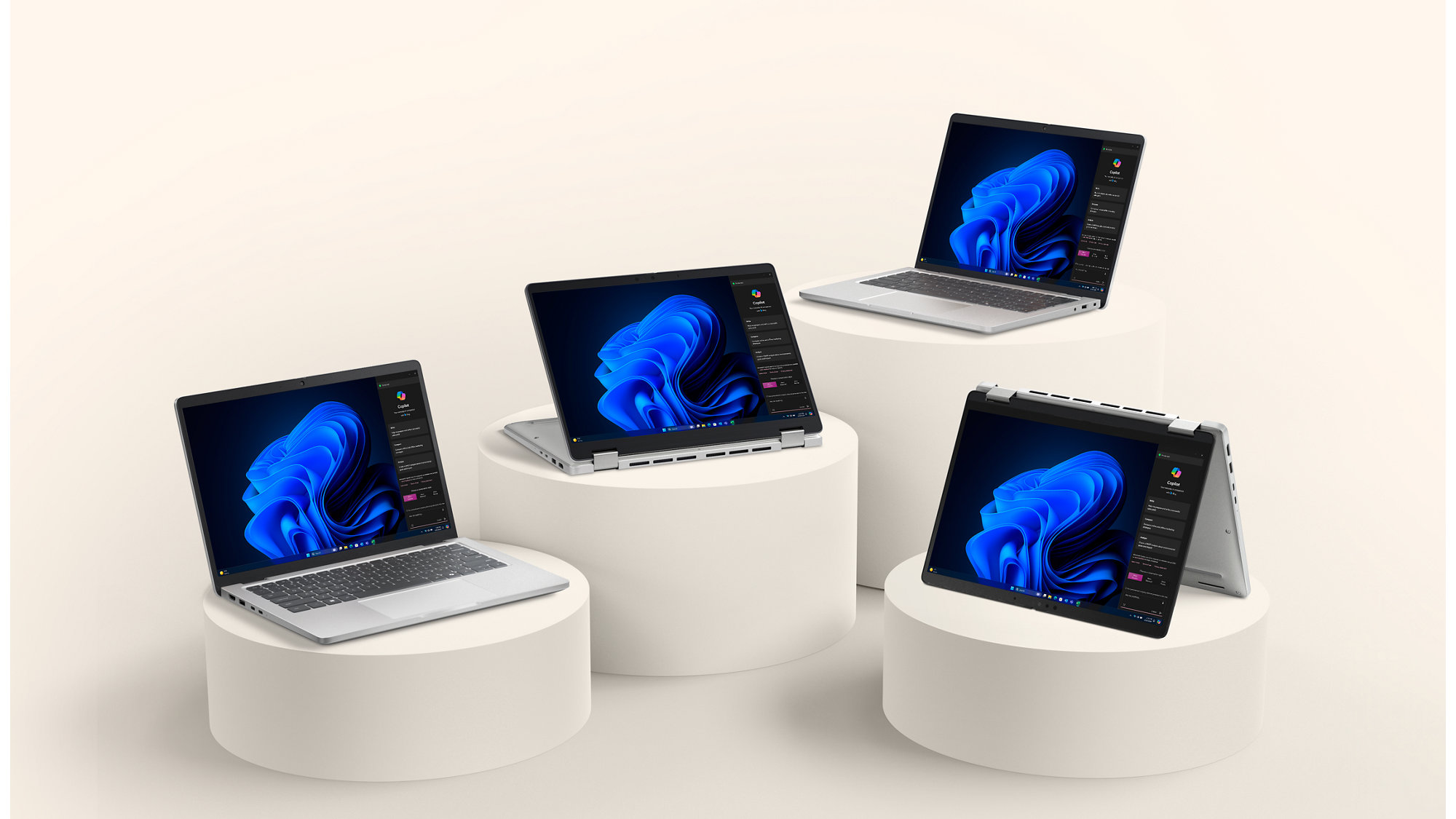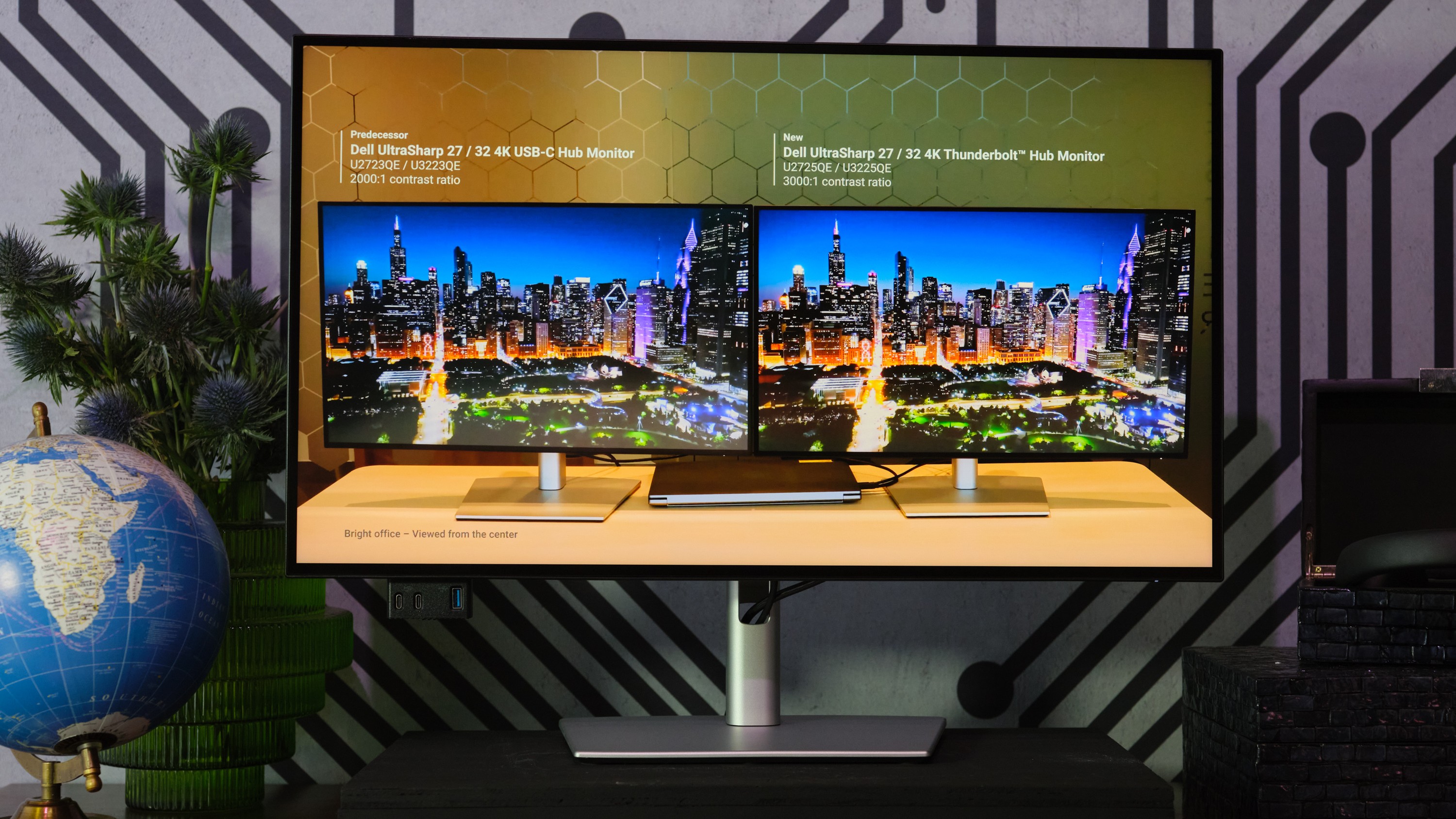
CES 2025 is full of announcements, and Dell is responsible for a ton of them. Not only did Dell unveil over a dozen PCs today, the company announced a rebranding of its entire lineup of consumer devices. Gone are "XPS," "Latitude," "Precision," and all previous Dell brands. 2025 is the age of "Dell," "Dell Pro," and "Dell Pro Max." Those new tiers represent the entire range of consumer devices from Dell going forward (except for Alienware, which is excluded from the rebranding).
I also covered the new Dell and Dell Pro Max laptops that were announced today, but the largest group of new hardware comes from the company's Dell Pro lineup. A whopping seven laptops and two monitors from the Dell Pro category were unveiled during the event.
Dell Pro best equates to Dell's Latitude devices up to this point. Regardless of if a device is Dell Pro Base, Plus, or Premium, they line up with what would have been a Latitude device before today.
What is Dell Pro?

Before breaking down the new pieces of hardware, I need to explain what Dell Pro is. The "Dell Pro" name represents one of three major categories under the new Dell naming scheme. Dell Pro is designed for professional-grade productivity. It sits between the Dell Pro Max category and the consumer category that's simply known as "Dell."
Within each of the three new categories are tiers to indicate prices. Devices with premium in the name are the most expensive within a category and they "[represent] the pinnacle of mobility and design." Below that sits "Plus" devices, which are made for "highly scalable performance." The lowest tier is "Base," which are entry-level and affordable.
The new naming structure was implemented to usher in the age of AI PCs and to simplify the company's branding. Our Editor-in-Chief called the move both bold and risky, which I agree with. The current naming structure by Dell is not exactly clear, since there is overlap between various categories and brands. I doubt most people could explain the difference between a Dell Latitude laptop and a Dell Inspiron laptop. But is switching to three categories and three tiers within those categories a shift in the right direction?
Take a quick look at just the Dell laptops announced today at CES 2025:
- Dell Pro Max 14
- Dell Pro Max 16
- Dell Pro 13 Premium
- Dell Pro 14 Premium
- Dell Pro 13 Plus
- Dell Pro 14 Plus
- Dell Pro 16 Plus
- Dell Pro 14
- Dell Pro 16
- Dell 14 Plus
- Dell 14 Plus 2-in-1
- Dell 16 Plus
- Dell 16 Plus 2-in-1
If you know the rules of the naming structure, you can work out what each device is and which category and tier it falls into. But if you hadn't studied press material from Dell and are just looking to buy a laptop, would you be able to tell the difference between a Dell Pro 16 and a Dell 16 Plus without checking?
Dell explained that it did months of research before deciding to rebrand its consumer laptops. I'm not convinced it was the right move, but I'm basing that off how readers of our site react to big-name items. I know people will click to read a Dell XPS 14 review. I think enthusiasm will be replaced with questions when people see a wave of reviews about the Dell Pro Max 14, Dell Pro 14 Premium, Dell Pro 14, and Dell 14 Plus.
Dell Pro laptops

With seven Dell Pro laptops announced today, there is a lot to look at. The lineup includes PCs with Intel Core Ultra Series 2 processors (both V and U SKUs), as well as AMD Ryzen processors. Before you cross your eyes staring at spec sheets, here's the main takeaway:
Dell Pro laptops promise excellent battery life, on-device AI, and are Copilot+ PCs. Dell resigned the notebooks in this lineup to "set a new standard in professional PCs."
I think it's telling Dell announced so many Dell Pro devices today. The company was not shy in unveiling hardware from other lineups, but the Dell Pro group is larger than Dell or Dell Pro Max, at least in terms of pieces of hardware shown at CES.
Out of all the new Dell Pro devices, the Dell Pro 14 Premium stands out. It is the first commercial notebook with a tandem OLED display, according to Dell. That display is 24% more efficient and 49% lighter than traditional OLED displays.
Our friends at What Hi-Fi have a full breakdown of tandem OLED displays. The technology involves layering OLED pixels over each other, giving you more brightness. Screens with tandem OLED panels are brighter, show more detail, and are more responsive than traditional panels.
The most famous device with a tandem OLED display is the iPad Pro (2024). Our colleagues at TechRadar were all over that display when it was announced, and the screen earned a perfect 5 out of 5 in the display section of TechRadar's iPad Pro 13-inch review. The benefits seen on the new iPad now make their way to commercial laptops thanks to the Dell Pro 14 Premium.
Dell UltraSharp monitors

Dell also unveiled a pair of UltraSharp monitors today at CES. I'm not sure why these monitors fall outside the naming convention announced this week, but regardless, they look like lovely devices. The Dell UltraSharp 32 4K Thunderbolt Hub Monitor (U3225QE) and Dell UltraSharp 27 4K Thunderbolt Hub Monitor (U2725QE) both feature a screen with IPS Black technology and a 3,000:1 contrast ratio. They also act as Thunderbolt 4 connectivity hubs, which is a godsend for people who prefer desks without clutter.
Thunderbolt 4, USB-A, USB-C, and RJ45 ports are all on both new devices from Dell. The monitors also have front-facing pop-out ports for 15W USB-C charging for accessories.
USB-C Extended Power Range, which both monitors have, is a new standard that supports up to 240W power delivery, though the new Dell UltraSharp monitors only work with up to 140W of power delivery. Still, that's higher than the previous maximum of 100W. That's a nice increase since some laptops need more than 100W to stay fully charged.
Both monitors have 4K resolution, VESA DisplayHDR 600, and promise 47% deeper blacks and an 89% ambient contrast ratio improvement when used in typical office environments.
Dell claims that its new monitors are the first 4K monitors with the highest eye comfort certification (TÜV Rheinland Eye Comfort 3.0). To earn that certification, the devices reduce blue light emission, automatically adjust brightness and color temperature based on the environment and have low reflectance panels. The displays also have a 120Hz refresh rate.







